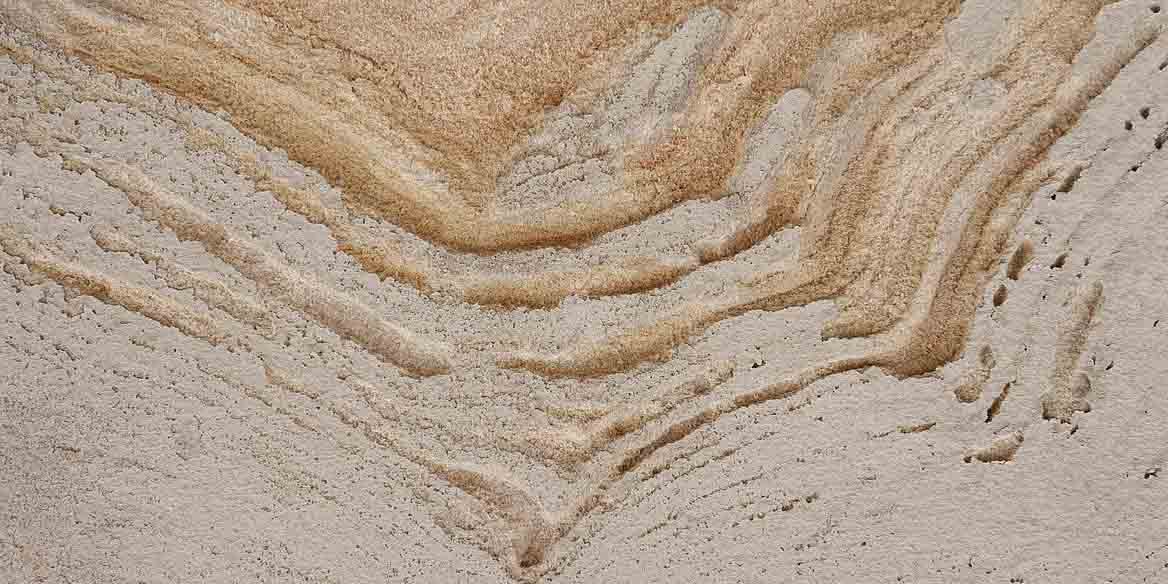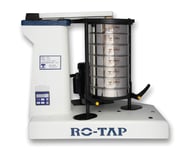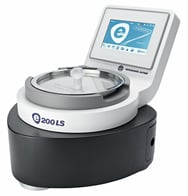Test Sieve Analysis vs. Air Jet Sieve Analysis vs. Dynamic Image Analysis
Particle size analysis is an essential step manufacturers must take to ensure their quality control program is effective. It allows lab technicians to verify that the particles throughout the production line are of a quality that the end consumer will find desirable.
There are currently three main methods of conducting particle analysis used in industries worldwide: test sieve analysis, air jet sieve analysis, and dynamic image analysis. Each procedure carries a unique set of pros and cons that allow lab technicians and lab managers to identify which practice will produce the best results.
But what method should you be using?
As prominent leaders with over 150 years of particle size analysis experience, W.S. Tyler is here to help you navigate these quality control practices to help you better understand which one is right for you.
To that end, this article will discuss:
- What particle analysis is
- What the different methods of particle analysis consist of
- The factors that you should consider when determining which method is suitable for you
What Is Particle Size Analysis?
Particle Size Analysis is the practice of analyzing the distribution of sample material to determine the size and shape of the individual particles. It is an integral quality control step companies take to check that the materials that they use, whether purchased from a third party or produced in-house, will help to produce an end product that meets customer expectations.
For instance, when plastic extrusion plants prepare to filter out molten polymers, particle size analysis is used to calculate the material's batch size. This helps floor engineers to calculate the temperature the plastic pellets need to be to produce optimal throughput.
If you neglect to incorporate reliable particle analysis procedures into your operation, you are at risk of product failure and product recalls.
How Do I Conduct a Particle Size Analysis?
Currently, there are three main methods used to yield reliable particle size analysis results: Test Sieve Analysis, Air Jet Sieve Analysis, and Dynamic Image Analysis. We will now break down each to help you better determine which method best fits your needs.
Test Sieve Analysis
Test sieve analysis involves using several test sieves stacked on top of one another that are placed into a sieve shaker, such as the W.S. Tyler RO-TAP®. The sample material is placed into the topmost sieve in the stack, at which point the sieve shaker shakes and taps the sieve stack, allowing the individual particles of the sample particles to make their way through the stack.
Once the sieve shaker has completed its circuit, lab technicians analyze the amount of material retained on each sieve to generate a particle distribution curve and determine the overall quality of the material throughout the production line.
Test sieve analysis is ideal for operations that desire a dependable particle analysis method reflected in dozens of industry standards and easy for any lab technician to use. To that end, it should be noted that a traditional test sieve analysis can take up to 30 mins from beginning to end.
Air Jet Sieve Analysis
Air jet sieve analysis requires lab technicians to employ an air jet sieve, such as the Alpine Air Jet Sieve e200 LS. Air jet sieves work to create a vacuum and propel the sample material, making them slam against the plexiglass lid and pass through the sieve.
This action makes air jet sieve analysis the ideal method to test material that often becomes agglomerated, such as flour, powdered sugar, and concrete mix. Air jet sieve analysis can prove to be a very involved process as you can only test one sieve at a time; however, its interactive and automated interface helps reduce user error.
Dynamic Image Analysis
Dynamic image analysis is the technique in which lab technicians rely on a dynamic image analysis system, such as the W.S. Tyler Computerized Particle Analyzer (CPA), to analyze both the size and shape of the individual particles that make up a representative sample.
Now, dynamic image analysis systems utilize high-resolution line scan cameras to test thousands of particles per second. The CPA, in particular, can detect up to 10,000 particles as fine as 10 microns per second.
Which Method Is Right for Me?
Ultimately, your industry standards are what will dictate which method and device you should use. That said, if your industry standards don't designate the use of one primary method, there are nine main factors that should be taken into consideration when determining what method to use:
- Material Type
- Cost
- Noise Level
- Installation
- Ease of Operation
- Dependability
- Test Duration
- Results
- Maintenance
Material Type
Test Sieve Analysis
Test sieves, accompanied by a sieve shaker, are typically used to perform dry sieve analysis tests; however, lab technicians can use specialized kits to allow for wet sieve analysis testing as well.
Regardless, test sieve analysis is ideal for most free-flowing particles down to 20 microns. This, of course, is heavily dependent on the quality of your sieves.
Air Jet Sieve Analysis
Air jet sieves are designed to test dry materials. As stated above, this particular method is used to test fine materials down to 10 microns that often become agglomerated over time and hard to test using other methods.
Dynamic Image Analysis
As dynamic image analysis systems rely on a line scan camera, dynamic image analysis can only be used to test non-agglomerated material. If agglomerated particles are tested, the line scan camera will read the particle cluster as one large particle, skewing your particle distribution curve.
Cost
Test Sieve Analysis
To conduct a reliable test sieve analysis requires the use of a reliable sieve shaker, either electromagnetic or mechanical, and a dependable stack of test sieves.
Now, there are several sieve shakers on the market. That said, the W.S. Tyler RX-29 and RX-30 are two of the most widely used units throughout the industry.
The RX-29 has an approximate price tag of $2,356.65, while the RX-30 has an approximate price tag of $2,696.20.
When it comes to test sieves, there are five elements that dictate the overall cost of a test sieve: the sieve type, alloy, mesh specifications, sieve size, and any certification services you wish to apply. That said, a single test sieve can cost anywhere from $35 to $850.
For more information, refer to the article: How Much Does A RO-TAP® Sieve Shaker Cost? (Pricing, Factors, & Models).
Air Jet Sieve Analysis
The cost of an Alpine Air Jet Sieve e200 LS is directly affected by the software package you go with. Currently, there are basic, ultimate, and security software packages to choose from.
The following provides insight into each software level:
Security Model - (Requires a network connection)
- Automatically save results
- Pre-Set Feature
- Daily Summary Report
- Grams or Percent report capabilities
- Curve of cumulative retention
- CRF Part 11 Compliant
- Save all analysis to network with electronic signature for audit/trailing purposes
- CRF Part 11 Compliant
- Password and user admin - This allows you to create individual users for every operator using the Air Jet Sieve and give them parameters with five levels of admin
- Different levels allow certain operators to only run preset SOP tests, run manual tests, create SOP tests, etc.
Cost - $27,500.00
Ultimate Model - (Requires a network connection)
- Automatically save results
- Pre-Set Feature
- Daily Summary Report
- Grams or Percent report capabilities
- Curve of cumulative retention
- Password and user admin
- 2 levels, admin and operator
Cost: $18,600.00
Basic Model
- No network connectivity
- Save data to the ALPINE itself
- Compatible with external scale
- Password and user admin
- 2 levels, admin and operator
Cost - $14,900.00
NOTE: You will need to purchase a Karcher vacuum, which is sold separately, for proper air jet sieve performance. This vacuum will add $2,050.00 to your order.
Dynamic Image Analysis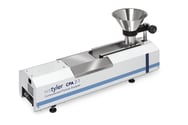
When it comes to the cost of a dynamic image analysis system, several factors are considered. The equipment, software, setup, and training all affect the cost all play a role in determining the cost of your system.
The approximate price range of a CPA Unit is $60,000 to $110,000.
For more information, refer to the article: How Much Does A Computer Particle Analyzer Cost?
Noise Level
Test Sieve Analysis
The noise level you can expect while conducting a test sieve analysis depends on the type of sieve shaker you use.
Mechanical sieve shakers produce roughly a noise level of 85dB, as they rely on the physical tapping of the sieve stack to promote particle movement. Electromagnetic sieve shakers, on the other hand, rely on micro-vibrations to promote particle movement, resulting in noise levels that don't exceed 70dB.
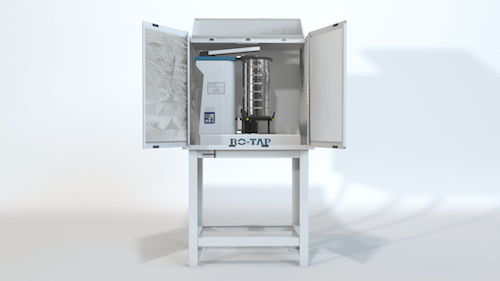
Note: Mechanical sieve shakers can be placed into a sound enclosure to reduce the noise level to 78 dB if your industry standards require the use of mechanical shakers, but noise is a concern in your lab setting.
Air Jet Sieve Analysis
Air jet sieves rely on industrial vacuum cleaners to create the air jet motion that breaks down the agglomerated particles. That said, some noise is to be expected during operation; however, far less than a sieve shaker.
Dynamic Image Analysis
The only noise source from most dynamic image analysis systems comes from the vibrating feeder tray and the particles falling into the collection pan, making it the quietest method.
Installation
Test Sieve Analysis
Installing a sieve shaker is a reasonably straightforward process that can be done in-house by two lab technicians. Your sieve shaker should come with a user manual that breaks down the setup process step-by-step.
That said, after a few parts are attached to the main body of the sieve shaker, adjusted, and the sieve shaker is property secured, all that is left to do is plug the device in and begin testing.
Air Jet Sieve Analysis
Much like the cost, the installation of an Alpine Air Jet Sieve e200 LS is dependent on the software package you select. Basic installation can be done in-house by simply connecting the unit to a scale, a vacuum, and a power source.
Ultimate and security installations, however, require an on-site visit from one of our technicians. This process involves connecting the device to your network, programming all users to prevent unauthorized testing, creating an audit trail, and completing IQ/OQ documentation.
Dynamic Image Analysis
The W.S. Tyler CPA also requires an on-site technician visit to install the device properly. During this visit, the technician will install the device, whether for an online or inline operation and train your staff on how to operate it.
Ease of Operation
Test Sieve Analysis
Sieve shakers are relatively easy to use. Simply assemble your sieve stack, place it into the sieve shaker, and set the timer on the sieve shaker.
That said, there are a handful of moving parts that may need replacing as time goes on. Luckily, part replacement is made easy with our step-by-step replacement guide.
Air Jet Sieve Analysis
With the ability to store programmed testing protocols known as standard operating procedures (SOP), the Alpine Air Jet Sieve e200 LS proves to have a slight learning curve but easy to manage once correctly set up. These SOPs will essentially walk the lab technician through the testing process, going as far as to block the wrong sieve from being used.
Dynamic Image Analysis
The W.S. Tyler CPA, when paired with its software, is a fairly complex system as with all dynamic image analysis systems. After the 2-day technician visit, the lab technicians on your team will know how to program the specialized software to accommodate your particular operation and generate a reliable particle size distribution curve with the click of a bottom.
Dependability
Test Sieve Analysis
As test sieve analysis is the most manual particle analysis process, human error should be expected. Achieving repeatable results through a team of lab technicians, failure to calculate sample retention correctly, missing a sieve in the calculations are all examples of human error that can occur during test sieve analysis.
That said, all human error is easily avoidable with the proper training. When best practices are used, test sieve analysis is one of the most feasible methods for achieving accurate and repeatable results.
Air Jet Sieve Analysis
As air jet sieves can break down agglomerated particles and provide lab technicians with a particle analysis method that is, for the most part, automated, air jet sieve analysis is one of the easiest ways to obtain accurate results for a wide range of materials.
The most significant impact air jet sieves have on dependability is that any particles that are finer than the mesh size fall through and are taken in by the vacuum. This means you can only test a particular sample of material once.
NOTE: An attachment referred to as a cyclone can be purchased and attached to the system to collect these fine particles before entering the vacuum bag. That said, any residual material should be cleaned and removed after each test to avoid particulate contamination.
Dynamic Image Analysis
As dynamic image analysis systems utilize specialized computer software to conduct an accurate dynamic image analysis as well as calculate the results, all avenues of human error are virtually eliminated. Additionally, as the lab technician simply needs to put the sample into the device's hopper, the material can be tested multiple times and produce identical results.
Test Duration
Test Sieve Analysis
On average, it takes a sieve shaker 8 to 10 minutes to properly run material through a sieve stack. You then need to weigh the sample retained on each sieve in the stack and calculate your results.
From beginning to end, a sieve analysis can take roughly 20 to 30 minutes.
Air Jet Sieve Analysis
The time of an air jet sieve analysis is depended on which method you use. There are currently two air jet sieve techniques that can be used: the standard method and the swiss method.
The standard method involves placing the sample on the finest sieve, running it, and transferring the residual material onto the next sieve in the stack.
The swiss method involves dividing your sample material into smaller samples for each sieve in the stack to have its own sample. Each sample is then run on its designated sieve.
While the swiss method is proven to be more accurate, it requires more sample material and takes longer as samples must be divided into several micro samples. To that end, air jet sieve analysis takes the most time as material is run one sieve at a time regardless of what method is used.
Dynamic Image Analysis
Dynamic image analysis is the fastest particle analysis method, with an average test duration of three minutes. In these three minutes, the particles of your sample are analyzed, the results are calculated, and a particle size distribution curve is generated automatically with the same accuracy, or better, as a test sieve analysis that can take up to 30 minutes.
Results
Test Sieve Analysis
Test sieve analysis is used to test the particle size distribution of dry, free-flowing sample material. That said, test sieve analysis is limited to particle size results as test sieves provide little to no indication of the shape of the individual particles.
To that end, all sample retention measurements and test results are completed manually.
Air Jet Sieve Analysis
Air jet sieve analysis is used to test particle size distribution in a much more accurate way than test sieve analysis. The most significant difference between air jet sieve analysis and test sieve analysis is that the air jet sieve unit itself calculates and stores all analysis results automatically, with the security software package creating an audit trail for each test.
Dynamic Image Analysis
Dynamic image analysis is employed to gather a more comprehensive analysis of your particle analysis. When paired with its proprietary software, dynamic image analysis systems not only provide insight into the size of the particles in a sample but their shape as well.
Maintenance
Test Sieve Analysis
Sieve shakers, specifically mechanical sieve shakers, are constructed out of dozens of moving parts that are subject to wear and tear over time. This means that to continue yielding accurate and repeatable sieve analysis results, you will eventually need to replace certain parts of your sieve shaker.
There are maintenance kits available for purchase that include some of the most commonly replaced parts. Forutanly, sieve shakers were designed to allow for easy replacement of parts in-house by the lab technicians, reducing costly downtime.
Air Jet Sieve Analysis
As the test sieves that the Alpine Air Jet Sieve e200 LS use employ RFID chips, the unit itself records the amount of time a sieve has been used and informs the operator when the sieve needs cleaning. But because this particular particle analysis method relies on propelled air, test sieves can be used more in-between cleanings.
When it comes to the air jet sieve unit itself, it is recommended that the unit be cleaned regularly. The air filter in both the unit and the vacuum should undergo routine replacement to ensure the regulation tolerances are maintained.
Additionally, most air jet sieves will need to be calibrated yearly to ensure the device and vacuum are operating as intended.
Dynamic Image Analysis
Dynamic image analysis systems don't utilize many parts that require heavy maintenance, so the device will most likely provide desirable results with regular cleaning and proper care. If there is an issue with your device, odds are one of the program presets was tampered with, your file paths are not clear, or a software update is required, all of which can be fixed remotely by one of our technicians.
The biggest issue you may encounter is the need to have the line-scan camera recalibrated, which will require you to send your device in for service. This can be determined by placing the calibration frame in front of the camera and determining the pixel width between the three bars of the frame.
If your device reads anything beyond 21 to 23 pixels between each bar, the camera will need to be recalibrated.
Accurate and Repeatable Results Start With a Dependable Sample
Test sieve analysis, air Jet Sieve Analysis, dynamic image analysis are all particle analysis methods proven to deliver optimal results when integrated into the correct application. While your industry standards ultimately control what method you use, the overall goals and needs of your operation should be compared to the pros and cons of each technique to best determine what is right for you.
But regardless of what method you choose, you will need to understand how to work with your sample material. This will allow you to achieve reliable particle analysis results and deliver a product that meets customer expectations.
W.S. Tyler has helped customers perfect their particle analysis operation for over 150 years and strives to ensure you have the knowledge needed to yield accurate and repeatable results consistently.
To learn more about the best practices you should implement when handling your sample material, read the following articles:
About Ronnie Brown
Ronnie is the Content Writer for W.S. Tyler and has four years of experience as a professional writer. He strives to expand his knowledge on all things particle analysis and woven wire mesh to leverage his exceptional writing and graphic design skills, creating a one-of-a-kind experience for customers.

